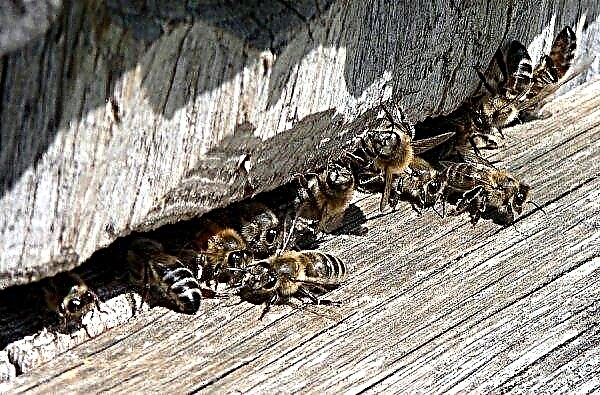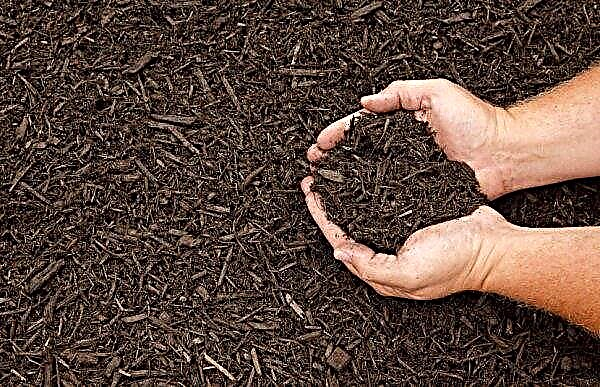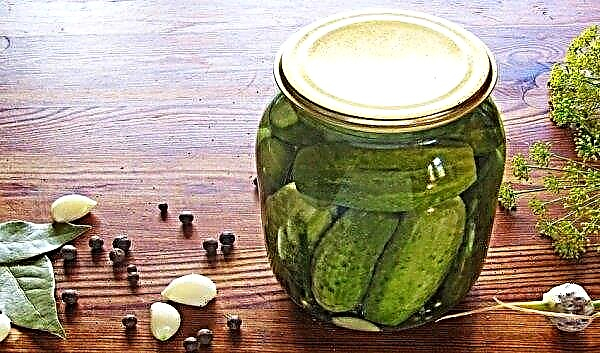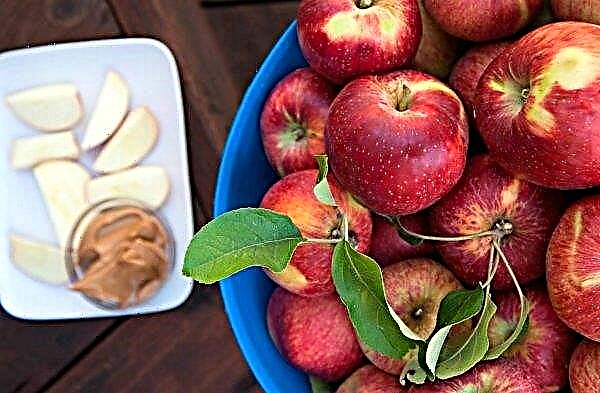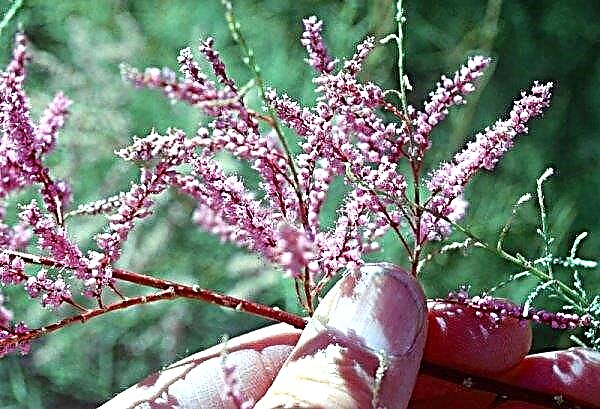Cumbria is attractive in appearance and unpretentious in content, therefore it is often found in apartments and offices. Check out this flower in more detail to know how to care for it.
Botanical description of the plant
Cumbria orchid is an artificially obtained hybrid; a flower cannot be found in the wild. The plant is endowed with rounded pseudobulbs (false bulbs), as well as long (up to 0.5 m) narrow green leaves. The shape of the buds is different: it can be stellate or round.
Their size reaches 10 cm. The buds are painted in yellow, purple, brown or red. It is almost impossible to meet the monochromatic color of these orchids. Often the petals have a mixture of two shades with noticeable spots or stripes of white color, with a bright yellow core.
Important! With proper care, cumbria bloom can be repeated several times throughout the year.
Plant characteristics:
| Root system | Powerful |
| Stem | Upright, shoot |
| Leaf shape | Narrow and elongated |
| Leaf color | Dark green |
| Flower shape | Star or round |
| Flower color | Yellow, purple, red or brown |
Varieties
There are many species and varieties of cumbria, which in turn have dozens of varieties.
The most popular types are:
- Colmanara. Created by crossing representatives of three genera. The flower stalk grows upwards by 120 cm. On it, up to 40 flowers can flaunt simultaneously. Flowering lasts up to 90 days. Petals are painted in yellow and red. Flowers exude a pleasant aroma.

- Beallara. The result of crossing 4 different species. On the shoot stem, stem pseudobulbs are formed. The height of the plant reaches 60 cm, the main part is the peduncle. Leaves typical for the species Cumbria. Flowers are collected in inflorescences of several pieces. Buds can be from 1 to 15 pcs. Their sizes are quite large - up to 20 cm. The color can be white, pink or cream. The shape of the flower resembles a star.

- Miltassia. A hybrid obtained after crossing two species of orchids. Flowers look like small stars. The plant has been in bloom for two months. More often this happens in spring and autumn. The flower needs serious care.

House growing conditions
Like all plants, cumbria needs certain conditions for life. Let's consider them in more detail.
Did you know? Orchids — the most numerous representatives of the plant world on earth. Today, more than 35 thousand species are known that grow in the wild, and 150 thousand are bred by breeders.
Lighting
Cumbria is a photophilous plant, which is important to consider when choosing a location for it. Direct exposure to the sun should be avoided so that burns do not appear on the leaves. Sometimes the flower organize additional lighting with phytolamps. Do this if natural daylight hours last less than 10 hours.
Ventilation
The flower needs good ventilation of the roots. The roots are thin and delicate, so you need to handle them carefully when transplanting or changing the container. In addition, in case of excess moisture, they can rot. Cumbria is grown in small ceramic pots, since the space must be filled with roots for flowering.
For ventilation, the substrate must be of a large consistency; in addition, peat or crushed pumice is added to the pot.
Temperature mode
Throughout the year, the orchid needs a uniformly moderate temperature: in warm time + 22 ... + 26 ° C, and in winter + 16 ... + 20 ° C. During flowering, it is important to avoid drafts, since the plant can not only lose flowers, but also die.
During flowering, it is important to avoid drafts, since the plant can not only lose flowers, but also die.
Important! Unlike other types of orchids, this one does not need an artificial change in temperature to stimulate flowering. Cumbria will bloom in due time without such manipulations.
Air humidity
This indicator should be in the range of 25-30%, sometimes it needs to be increased to 40%. Do this during the growth of new pseudo-tubers. Humidity can be increased, for example, by putting a pot with a plant in a pan with water, using spraying with a spray gun or placing any container filled with water near the plant.
Home Care
For the full growth and appearance of flowers, an orchid needs systematic watering, fertilizer and transplantation. Consider what features these processes have.
Watering
With the wrong watering regime, the plant grows one-sided, and the leaves become wrinkled. In the warm season, watering is carried out every 10 days. Water should be left standing or boiled. Its temperature is slightly higher than room temperature.
The pot must be immersed in water 2/3, it is important that the bulbs remain dry. Check whether you need watering, you can do this: with your fingers to press on the substrate, if it crunches - the time has come.
Top dressing
The popularity of orchids is so great that stores have complexes designed for each growth phase. In order not to spend extra money, we recommend purchasing a universal fertilizer that can be used at any time.
It is better to add fertilizer during every third watering. The composition can be added to water or immersed in clean water for 10 minutes, and then dipped in a nutrient solution so that they do not get burns. In addition, it is possible to fertilize through foliage.
To do this, choose a special type of fertilizer, which is sold in bottles. Many people prefer to use only it, so as not to salt the substrate.
Transfer
The transplant is carried out during the rest period. This is recommended every 2 years.
It is important to properly fill the new pot:
- drainage should fill a quarter of the tank height;
- behind it lay the substrate of a large fraction;
- on top - smaller;
- to decorate the surface using a solid sphagnum.
Did you know? Some species of orchids live for about a century.
Transplantation rules are as follows:
- Before transplanting, cumbria is well watered. Only in this case, the delicate roots will become elastic and not injured.
- Bulbs do not deepen into the substrate.
- Aerial roots do not fall asleep.
- For new bulbs need to leave a place.
- So that the flower does not fall, it is first fixed with pegs.
- The first week the plant is not fed and watered.
Special period
Like many other flowers, cumbria has two periods of life: flowering and peace. Let us consider each of them in more detail.
Bloom
Most often this happens during the autumn-winter period. Bulbs, from which buds later emerge, form in the warm season. In order for the flower to acquire the correct color and bloom for a long time, it needs to provide additional lighting in the dark.
In addition, to stimulate flowering, during the formation of bulbs, the number of waterings is reduced. After the supply of moisture is stopped for several weeks and only then conduct a slight watering. All these actions will lead to flowering.
Peace
A hybrid can grow without rest. However, in the absence of additional light and heat, in the cold season, growth slows down significantly. At this time, it is recommended to move the pot with the plant to a cooler place, reducing the amount of watering and feeding. This will help the flower to gain strength and with the onset of heat to please the flowers.
Breeding
Cumbria orchids can be propagated in several ways. Let's consider them in more detail.
"Kids"
The structure of the stems and bulb leads to the formation of a large number of "children". With their help, cumbria multiplies. "Children" are separated from the mother bush after the formation of full leaves. For rapid growth, they are placed in water, into which a preparation is added to stimulate growth.
After the formation of complete roots, they plant in a pot. Some land immediately after separation.
Dividing the bush
Such reproduction is carried out during transplantation. Do this only after the death of the flowers. The bush is removed from the pot and cleaned of the substrate. The roots are examined, removing damaged or diseased. It is divided into the desired amount, while the places of the slices are treated with potassium permanganate and only then they are planted in new pots.
Growing difficulties
When growing cumbria, you may encounter some difficulties:
- Lack of flowering. The reason is waterlogging of the soil. You can fix the problem by extracting the plant from the pot and drying, as well as reducing the amount of watering.
- Yellowing leaves. Comes from an overabundance of light. You need to rearrange the pot in another place or shade it.
- Whitening foliage. Observed due to excessive fertilizer. Reduce the number of top dressings and follow the standards set forth in the instructions for the drugs.
- Twisting and lethargy of leaves. The reason is the lack of water and heat. Move the plant to a warmer place, water more often.
- Presence of a problem of bacterial origin. The plant will have to say goodbye.
- Detection of pests (aphids, whiteflies). To control insects use "Actelik" or "Fitoverm".
- Worm is the most dangerous pest. They are removed with a napkin dipped in a solution of laundry soap, in beer or alcohol. In a running state, “Fitoverm” is used.
 Despite the possible difficulties in care, cumbria remains a popular indoor and indoor plant. Give him proper attention, and the plant will show itself in all its glory.
Despite the possible difficulties in care, cumbria remains a popular indoor and indoor plant. Give him proper attention, and the plant will show itself in all its glory.




